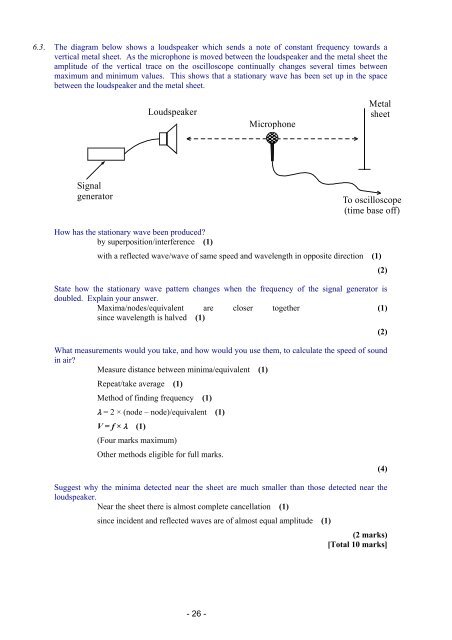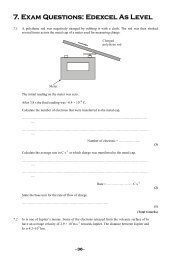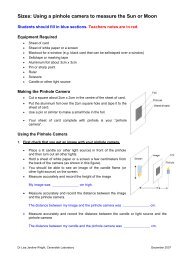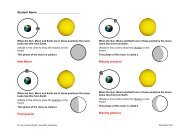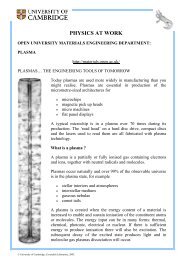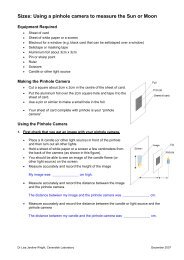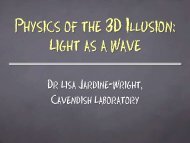6. Exam Questions: Edexcel A Level
6. Exam Questions: Edexcel A Level
6. Exam Questions: Edexcel A Level
Create successful ePaper yourself
Turn your PDF publications into a flip-book with our unique Google optimized e-Paper software.
<strong>6.</strong>3. The diagram below shows a loudspeaker which sends a note of constant frequency towards avertical metal sheet. As the microphone is moved between the loudspeaker and the metal sheet theamplitude of the vertical trace on the oscilloscope continually changes several times betweenmaximum and minimum values. This shows that a stationary wave has been set up in the spacebetween the loudspeaker and the metal sheet.LoudspeakerMicrophoneMetalsheetSignalgeneratorTo oscilloscope(time base off)How has the stationary wave been produced?by superposition/interference (1)with a reflected wave/wave of same speed and wavelength in opposite direction (1)(2)State how the stationary wave pattern changes when the frequency of the signal generator isdoubled. Explain your answer.Maxima/nodes/equivalent are closer together (1)since wavelength is halved (1)(2)What measurements would you take, and how would you use them, to calculate the speed of soundin air?Measure distance between minima/equivalent (1)Repeat/take average (1)Method of finding frequency (1) = 2 × (node – node)/equivalent (1)V = f × (1)(Four marks maximum)Other methods eligible for full marks.Suggest why the minima detected near the sheet are much smaller than those detected near theloudspeaker.Near the sheet there is almost complete cancellation (1)since incident and reflected waves are of almost equal amplitude (1)(4)(2 marks)[Total 10 marks]- 26 -


